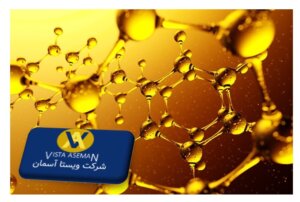**Introduction of Vacuum Bottoms (VB):
In the intricate landscape of oil refining, there exists a residue that often stands at the end of the line but plays a pivotal role in various industries. Vacuum bottoms (VB), also known as vacuum residue, represent the heaviest and most challenging components of crude oil. This article will unravel the world of VB, exploring its applications, chemical composition, production process, and the wide array of industries that rely on this dense and complex material.

**Applications of Vacuum Bottoms (VB)**
While VB may appear as a cumbersome and undesirable byproduct of oil refining, it is far from being a waste material. It finds applications in several key areas:
1. **Coking**: One of the primary applications of Vacuum Bottoms (VB) is in delayed coking. In this process, VB is heated to high temperatures and pressure, causing it to crack and yield valuable products. These include naphtha, diesel, and petroleum coke. Petroleum coke, a byproduct of coking VB, is used in various industries, including the production of anodes for the aluminum industry and as a fuel source.
2. **Bitumen Production**: Vacuum Bottoms (VB) serve as a vital feedstock for the production of bitumen, a highly viscous material used in road construction, roofing, and waterproofing. The high viscosity and heat resistance of VB make it an ideal starting point for bitumen production.
**1. Blending for Customization:**
Bitumen’s properties can be tailored to specific applications through blending. Depending on the desired characteristics, such as viscosity, softening point, or penetration, bitumen derived from vacuum bottoms (VB) can be blended with lighter fractions of crude oil or additives. This blending process is critical in ensuring that the resulting bitumen meets the specific requirements of various construction and industrial applications.
**2. Oxidation for Enhanced Performance:**
In certain applications, bitumen is subjected to oxidation. This controlled process involves the introduction of air at elevated temperatures (typically around 260-320°C or 500-608°F). The oxidation of bitumen can enhance its adhesion properties and durability. Oxidized bitumen is often used in roofing and waterproofing applications, where its improved performance under challenging environmental conditions is highly valued. Vacuum Bottoms (VB)
**3. Air Blowing for Modifying Properties:**
Air blowing is another method employed to modify Vacuum Bottoms (VB) into bitumen. In this process, air is blown through bitumen at elevated temperatures. This causes oxidation and polymerization of the hydrocarbons, resulting in increased molecular weight and viscosity. Air-blown bitumen is frequently used in road construction, where its high viscosity and durability are essential.
**4. Cutback Bitumen for Ease of Use:**
Cutback bitumen is produced by blending bitumen with a volatile solvent, such as kerosene or diesel. The primary purpose of this process is to reduce the viscosity of bitumen, making it more manageable and easier to apply. The solvent evaporates after application, leaving behind the bitumen to bind aggregate materials. Cutback bitumen is particularly useful in road maintenance and repair work. Vacuum Bottoms (VB)
**5. Emulsified Bitumen for Versatile Applications:**
In some applications, bitumen is emulsified, forming a stable mixture with water. This process typically involves the use of emulsifying agents and mechanical mixing. Emulsified bitumen is used for various purposes, including cold asphalt mix production and dust control on gravel roads. It is favored for its ease of handling and application in a broader range of temperatures.
**6. Polymer-Modified Bitumen (PMB) for Enhanced Performance:**
To further improve the performance characteristics of bitumen, polymers are often added to the mixture. This results in polymer-modified bitumen (PMB), which offers enhanced elasticity, durability, and resistance to deformation. PMB is commonly used in high-stress applications, such as heavy traffic roadways and airport runways, where performance and longevity are critical.
**7. Hot Mix Asphalt (HMA) for Road Construction:**
One of the most common applications of bitumen is in the production of hot mix asphalt (HMA). In this process, bitumen is mixed with aggregates (typically crushed stone, sand, and filler materials) at high temperatures. The resulting asphalt mixture is durable and used extensively in road construction. The quality of the bitumen used in HMA is a critical factor in ensuring the longevity and performance of road surfaces.
Vacuum Bottoms (VB)
**8. Research and Development:**
The field of bitumen production is not stagnant. Ongoing research and development efforts focus on optimizing the properties of bitumen for specific applications, as well as addressing environmental and sustainability concerns. These efforts can lead to the development of new technologies, additives, and processes to enhance the performance of bitumen and its sustainability.
**Sustainability and Environmental Considerations:**
Vacuum Bottoms (VB)
As environmental awareness and sustainability concerns grow, the bitumen production industry is exploring more environmentally friendly approaches. This includes the development of bitumen with lower emissions, recycling and reusing asphalt materials, and exploring alternative binders to reduce the environmental footprint of construction and maintenance projects.
**Conclusion:**
Bitumen production from vacuum bottoms Vacuum Bottoms (VB) is a dynamic and evolving field with a wide range of applications and continuous advancements. The ability to customize bitumen’s properties for specific purposes, such as road construction, roofing, and waterproofing, ensures that it remains a versatile and crucial material for various industries.
In a rapidly changing world, where infrastructure development and sustainability are paramount, the role of bitumen in providing durable, reliable, and environmentally conscious solutions is more vital than ever. As the field of bitumen production continues to evolve, it will play a key role in shaping the future of construction and infrastructure development.
3. **Hydrocracking and Hydrotreating**: Vacuum Bottoms (VB) can undergo hydrocracking and hydrotreating processes to break down its heavy hydrocarbons into lighter, more valuable products, such as gasoline, diesel, and petrochemical feedstocks.
4. **Heavy Fuel Oil**: VB is a source of heavy fuel oil used in industries, power generation, and marine engines. These heavy fuels are known for their energy density and cost-effectiveness.
5. **Lubricating Oil Production**: Some Vacuum Bottoms (VB) may be further processed to produce lubricating oils, which are essential in various industries and for the automotive sector.
6. **Asphalt Production**: Vacuum Bottoms (VB) is used in the production of asphalt, which is widely used in road construction, roofing, and other applications.
**Chemical Composition of Vacuum Bottoms**
The chemical composition of VB is highly complex and can vary depending on the source of the crude oil from which it is derived. However, some common elements and compounds found in VB include:
– **High Molecular Weight Hydrocarbons**: Vacuum Bottoms (VB) contains heavy, long-chain hydrocarbons with high molecular weights. These components contribute to its high viscosity and low volatility.
– **Sulfur**: Sulfur is often present in VB, and its removal is essential to meet environmental regulations and produce cleaner products.
– **Metals**: VB may contain trace amounts of metals, which can have detrimental effects on downstream processes if not removed.
– **Asphaltenes**: Asphaltenes are complex, high-molecular-weight compounds that contribute to the high viscosity of VB. Managing asphaltenes is a key challenge in handling and refining Vacuum Bottoms (VB) .
– **Resins**: Resins are intermediate compounds between asphaltenes and lighter hydrocarbons, contributing to the overall composition of VB.
**Production Process**
VB is produced within the vacuum distillation unit of an oil refinery. The process can be summarized as follows:
1. **Atmospheric Distillation**: Crude oil is first heated and passed through an atmospheric distillation tower. This separates it into various fractions based on boiling points, with lighter components rising and heavier ones descending.
2. **Vacuum Distillation**: The heaviest fraction, known as “vacuum residue” or VB, is further processed in a vacuum distillation unit. Here, the pressure is reduced, and temperature is carefully controlled to prevent cracking of the molecules. This allows the separation of VB from even heavier components, such as the atmospheric bottoms.
3. **Cooling and Storage**: The Vacuum Bottoms (VB) is then cooled and stored in tanks for further use or processing. At this point, various industries and processes may choose to utilize VB as a feedstock.
**Applicable Industries**
A wide range of industries relies on VB for various purposes. These industries include:
1. **Construction**: VB is a key feedstock for bitumen production, which is used in road construction, roofing, and waterproofing.
2. **Energy**: VB is processed into heavy fuel oils used in power generation and industrial heating applications.
3. **Petrochemicals**: Vacuum Bottoms (VB) is a valuable source for the petrochemical industry, serving as a feedstock for processes that convert it into valuable petrochemical products.
4. **Transportation**: Heavy fuel oils produced from VB are used in marine engines and certain industrial applications.
5. **Automotive**: Lubricating oils produced from VB play a crucial role in the automotive sector.
6. **Aluminum Production**: Petroleum coke, a byproduct of coking VB, is used in the aluminum industry.
7. **Roofing and Waterproofing**: Asphalt produced from Vacuum Bottoms (VB) is used in roofing and waterproofing materials.
8. **Environmental Remediation**: VB may also find applications in environmental remediation, such as in the creation of barriers to contain or control pollution.
**Conclusion**
Vacuum bottoms, often seen as the most challenging and heavy residue of crude oil refining, is far from being a waste product. Its chemical composition, production process, and utilization in various industries make it a critical component of the global energy and manufacturing landscape. Understanding VB and its versatility is essential for managing resources efficiently and maximizing the benefits of crude oil refining in a sustainable manner.
As industries continue to evolve, the role of vacuum bottoms in providing essential materials and energy sources remains vital. Whether it’s in the construction of roads, the production of energy, or the creation of petrochemical feedstocks, VB plays a fundamental role in meeting the needs of a growing and dynamic world. This heavy and often overlooked residue of the refining process demonstrates its worth by serving as a foundational element in the development of a modern society.
Vista Asman Company is a supplier of all kinds of oil derivatives and oil products (base oils) in different grades from the best sources at the best price with the ability to export to all safe ports in the world. Contact us for more information




